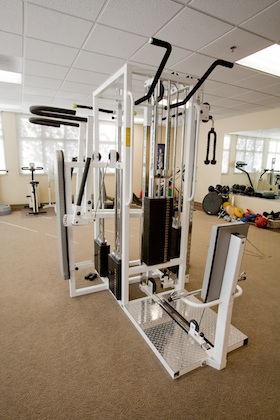You may have just had a bad fall, a misstep while running, or a sports collision. Or perhaps you’ve simply overused a muscle, tendon or ligament. These types of injuries are often called sprains, strains, and tears. Should you apply heat or ice?
The short and definitive answer is: ice.
You’re certainly forgiven if you didn’t know that. After all, many people use heating pads, hot whirlpools, and hot gel packs for their injuries, and some even apply sprays, creams or liquids to their skin to make it feel hot. But in the aftermath of an injury, you don’t want to apply heat to the affected area. You want to cool it with ice or an ice substitute. Here’s why:
Any injury severe enough to damage muscles, tendons, or ligaments will also damage the small blood and lymph vessels around those tissues. When this happens, the normally well-regulated system of blood delivery and lymphatic drainage of tissues is disrupted, and blood and lymphatic fluids are released in an uncontrolled manner. This causes inflammation, swelling, and pain.
Applying ice to an injured area relieves pain by slowing the conduction of nerve impulses from the area. Ice therapy also takes advantage of the body’s natural, adaptive response to cold, which is to maintain normal body temperature by cutting back on the blood supply to the cold area. This has the effect of allowing fluids to drain away from the injury, taking away injured cells, cell fragments, and inflammation-causing molecules. The result is reduced swelling and pain, and faster repair of damaged tissues.
The application of heat has the opposite effect. The body’s response is to send extra blood through the heated area so that the heat can be carried off before the tissues get too warm. Extra blood delivery to the injured area increases swelling, inflammation, and pain.
The best type of ice or ice substitute to use is whatever type you have at hand! Chemical cold packs, which chill rapidly when you break a capsule inside the pack, are expensive but work well. Cold gel-packs right from the freezer will also do the job. A zip-loc plastic bag filled with crushed ice is inexpensive and very effective. You can even use a bag of frozen peas and carrots!
Place the ice pack on the injured area and leave it there for 20 minutes. Remove it for 20 minutes, then put it back on. The best ice-on, ice-off intervals and the number of times you should use ice each day depend on the type, severity, and site of your injury. Please call our office for advice.
Should heat ever be applied to injuries? Yes, but only under limited, specific circumstances. For instance, several days after an injury, your physical therapist may instruct you to contrast your injury treatment with heat between ice applications. This has the effect of restoring normal blood circulation to the cold area quickly and accelerates the removal of injured cells, cell fragments, and by-products of the healing process from the injured site. We do not advise the use of heat to warm up a recovering joint or muscle prior to exercise. A slow and progressive active exercise warm-up, such as walking prior to jogging, is much more effective.
If you have sustained a soft tissue injury, the correct application of ice or ice substitutes will help control swelling, reduce pain, and speed your recovery. If you are unable to return to your day-to-day routine after a week of treatment with ice, or if you are in training for athletic competition, please call our office for additional advice and assistance.

Comments on this entry are closed.